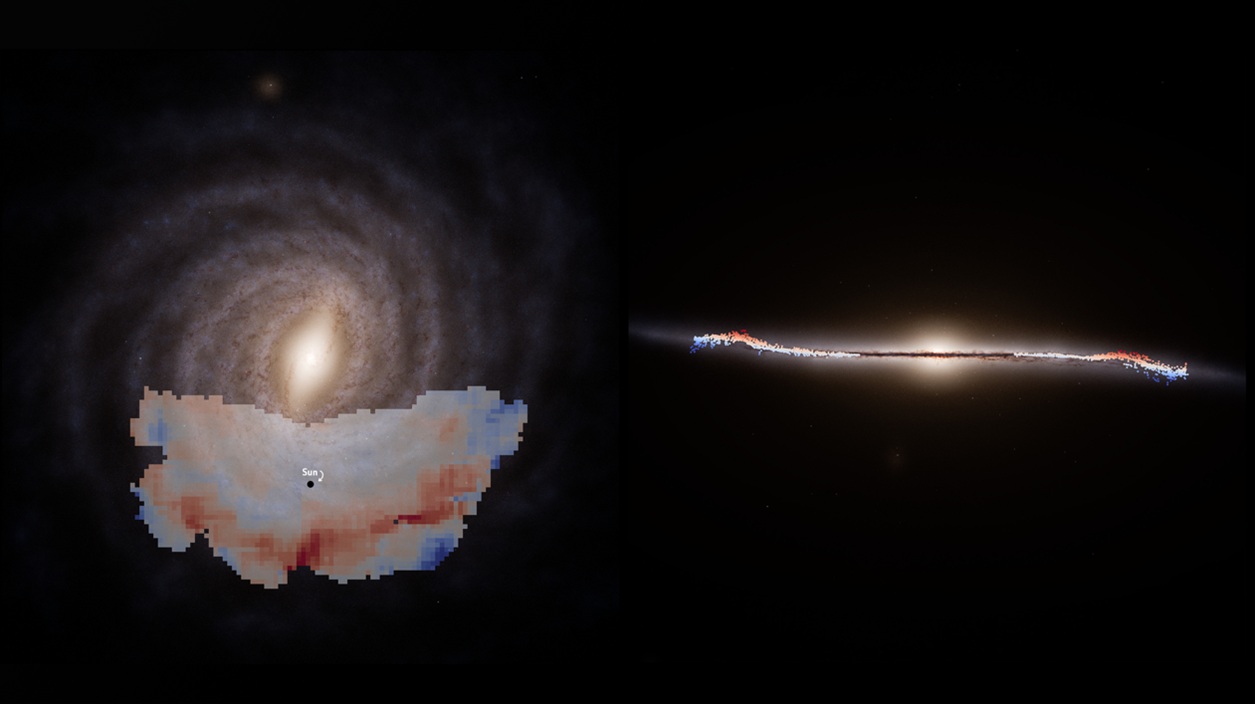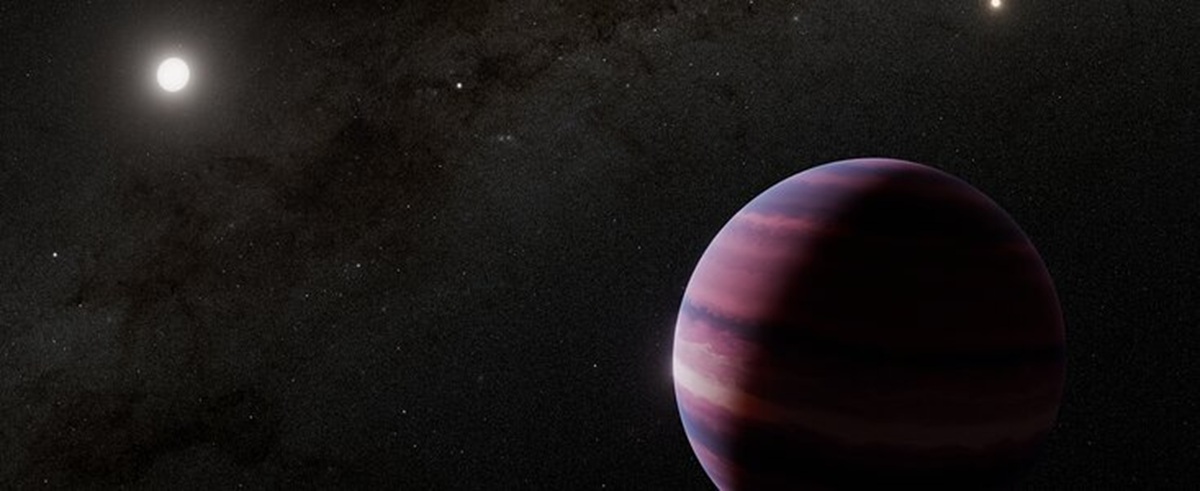For centuries, humanity has gazed at the glittering band of stars stretching across the night sky with a longing to understand what lies within it. Today, new revelations from the European Space Agency’s Gaia mission suggest that our home galaxy, the Milky Way, has secrets it is only beginning to reveal. Astronomers using Gaia’s unparalleled mapping capability have discovered that the Milky Way is not simply a flat stellar disc peacefully rotating in space, but a dynamic system now found to be rippling with a vast wave of stars extending tens of thousands of light-years.
A Galaxy in Constant Motion
Astronomers have long known that the Milky Way is far from static. Since the early 20th century, scientists established that billions of stars orbit the galactic center, forming a rotating disc of brilliant light. By the 1950s, researchers discovered that this disc is warped, curving and bending instead of maintaining a smooth form. In 2020, Gaia revealed another startling discovery—that the Milky Way actually wobbles, with motions akin to a spinning top slowly teetering in space.
Now, fresh analysis of Gaia’s treasure trove of data has uncovered something even more dramatic: an immense wave rippling across the galaxy, carrying vast sweeps of stars along in its path. This “galactic wave” behaves like ripples caused when a stone plunges into a pond, spreading outward from the galaxy’s core across unimaginable distances.
The scale of this wave is staggering. It stretches between 30,000 and 65,000 light-years from the galactic center, covering much of the galaxy’s outer disc. For perspective, the Milky Way spans around 100,000 light-years across. The discovery is giving astronomers an unprecedented glimpse of our galaxy’s restless nature.
Mapping the Milky Way in Motion
The key to this breakthrough is Gaia itself. Since its launch in 2013, the space telescope has been charting the positions, distances, and motions of nearly two billion stars with exquisite precision, creating the most advanced 3D atlas of the Milky Way ever assembled. Unlike any mission before it, Gaia captures not only where stars are located, but also how they are moving—toward or away from Earth, and across the sky.
This six-dimensional view of the galaxy (three spatial positions and three velocity components) allowed astronomers to go beyond static maps and actually reveal the Milky Way’s choreography. Using Gaia’s data, researchers could see the wave stretching across the galactic disc and, crucially, track the motion of stars moving within it.
“It’s not only about identifying a structure but actually seeing how it behaves,” explained Eloisa Poggio, an astronomer at Italy’s National Institute for Astrophysics (INAF), who led the research team that unveiled the wave. “The intriguing part is not just its appearance in three-dimensional maps, but the wave-like pattern in the motions of the stars themselves. That motion is exactly what we would expect from a wave.”
A Galactic Stadium Wave
To visualize it, Poggio likens the event to a wave performed by a crowd in a stadium. In such a wave, some fans stand tall, others are just sitting back down, while still others prepare to rise. On galactic scales, the movements translate into colored regions and arrows in stellar maps—red areas show stars at one wave stage, while white arrows mark those being nudged upward by the motion.
Captured at a frozen moment in cosmic time, this galactic wave is not something we can watch evolve over a human lifespan. Yet Gaia provides the equivalent of a snapshot of an immense crowd caught mid-motion, allowing scientists to reconstruct the complex ripple coursing through the Milky Way.
Following Stars Young and Bright
To trace the wave, Poggio’s team focused on two types of stellar beacons: young giant stars and Cepheid variable stars. Cepheids are particularly valuable because they pulsate in brightness with clockwork regularity, allowing astronomers to measure their distances with high accuracy. Both categories of stars are relatively young by cosmic standards and widely distributed across the galactic disc, making them perfect tracers of large-scale movement.
Because these youthful stars have not had billions of years to drift randomly, they preserve the “memory” of the environments in which they were born. Their correlation with the wave suggests that even the Milky Way’s interstellar gas is caught in the ripple, forming and shaping stars along with its sweeping motion.
The Mystery of the Wave’s Origin
What could create such a phenomenon, capable of stirring the motions of stars across tens of thousands of light-years? The answer remains unclear, leaving scientists with one of the most tantalizing mysteries of galactic astronomy.
One possibility is that the Milky Way was struck in the past by a smaller companion galaxy. Astronomers know that our galaxy has consumed others during its history—the Sagittarius dwarf galaxy, for instance, is still in the process of merging with the Milky Way. Such collisions can send waves rippling through the galactic disc, much as a pebble disturbs water.
Another potential link is to the so-called Radcliffe Wave, a smaller yet well-defined stellar filament discovered closer to home. This structure, just 500 light-years from Earth and extending over 9,000 light-years, represents a giant undulation in the interstellar medium. While scientists are unsure whether the Radcliffe Wave and the newly discovered galactic wave are directly connected, their coexistence suggests that ripples may be a fundamental property of the Milky Way’s structure.
“They may or may not be related,” Poggio observed. “That is why further research is essential. We are only beginning to uncover the complexity of these galactic-scale motions.”
Awaiting Gaia’s Next Big Reveal
For now, Gaia continues to be astronomy’s most powerful tool for deciphering the Milky Way. With each new data release, the probe offers higher accuracy and more comprehensive coverage. The upcoming fourth release promises to include refined positions and motions for countless stars, including some of the very Cepheid variables crucial to Poggio’s work.
“Future Gaia data will give us an even sharper picture of these large-scale features,” said Johannes Sahlmann, Gaia Project Scientist at ESA. “Every improvement helps us make more precise maps, which in turn help us understand the forces shaping the galaxy we call home.”
A Living, Breathing Galaxy
What is becoming increasingly clear is that our galaxy is far from a static collection of stars. Instead, it is a living system, bending, twisting, and vibrating with energies that testify to its turbulent past and dynamic present. Just as tectonic plates on Earth constantly reshape the planet, galactic-scale ripples remind us that the Milky Way too is in constant transformation.
The discovery underscores the importance of observing not just where stars are, but how they move. These motions encode the memory of past interactions—cosmic collisions, gravitational tugs, and resonances that ripple through the galaxy over millions of years. By reading this motion, astronomers are slowly unearthing the autobiography of the Milky Way.
For now, the newly discovered galactic wave offers a humbling perspective. It shows that even the vast stars we see shining in the night sky are part of a greater tide of motion, their paths subtly orchestrated by forces we are only beginning to grasp. Gaia’s maps reveal not just the structure of the galaxy but also its rhythm—a rhythm written in the motion of billions of suns.
As Poggio and her team refine their results, and as Gaia continues to deliver deeper insight, humanity may soon understand not only why the Milky Way ripples, but also what this tells us about where we came from and where our galaxy is headed.
Because in the end, the Milky Way is not just a backdrop for human history—it is itself in motion, performing a grand cosmic wave, one that stretches across tens of thousands of light-years and tens of millions of years of time. And thanks to Gaia, the curtain is slowly lifting on this galactic dance.





